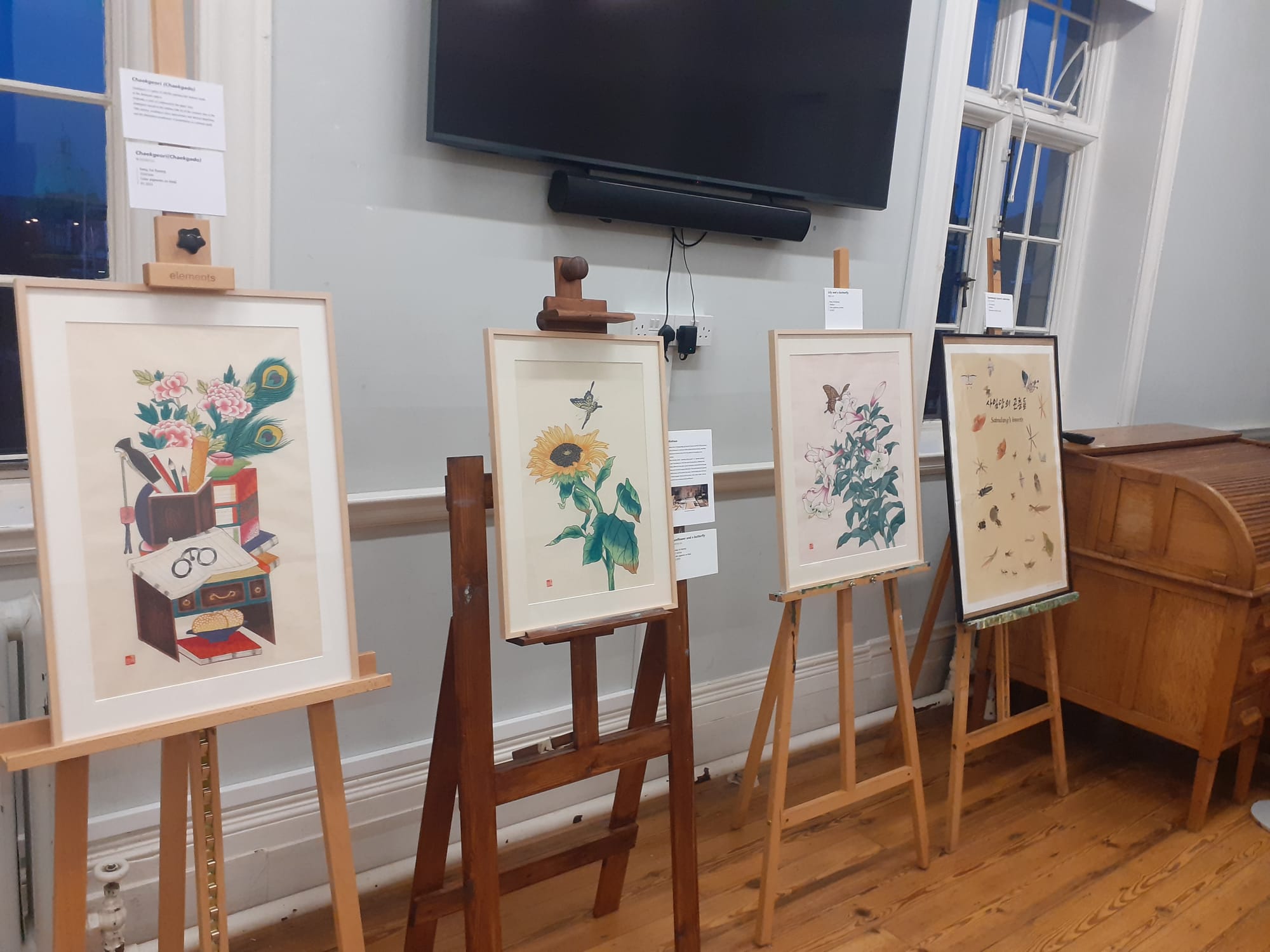What’s the best way to tell area residents about plans for a new asylum shelter nearby?
The government should tell communities directly about plans for new asylum shelters, some activists and politicians say.
Members of Collective Gaji painted takes on artist Shin Saimdang’s works, using their own styles and techniques, for an exhibition now on in the library.

After 6pm on Wednesday evening, a crowd builds in the upstairs room of Rathmines library.
Friends greet each other, children run and point to paintings. A photographer, his back against the wall, snaps with his camera, and three of the showing artists pace around, receiving flower bouquets and congratulations.
It’s the opening night of “Saimdang: Her Garden, Rediscovered”, a collection of artworks by four artists based on the works of Shin Saimdang, a sixteenth-century artist and calligrapher.
Sora Han, with her fellow artists Yeoung A Yeo, Yoonsun Choi and Eui Kyeong Kang, wanted to draw in an Irish audience to learn more about a prominent figure in Korean art history, they say.
And, to display their own work under a common theme, for their first exhibition as Collective Gaji.
They painted reinterpretations of Shin Saimdang’s botanical artwork, in their own styles and techniques for their exhibition, which runs until 14 November.
Canvases show two herons bathing, a bunch of grapes, and endless flowers and plants. Insects crawl between the plants and nibble the fruit.
Han, one of the artists, thanked the crowd. “I never imagined I would have an art exhibition, especially in Ireland,” she said, clasping the microphone. “I really hope you guys like.”
Yeo, Han and Choi live in Dublin. But Eui Kyeong Kang, who lives in South Korea, sent her botanical drawings by post.
Her detailed flower, insect and plant depictions are painted with minhwa painting on traditional Korean parchment, similar to Saimdang’s originals. They stand in vertical frames on easels between the study room windows.
At the back of the room, three renditions of the same portrait of Saimdang contrast the three artists’ styles. A boldly outlined Saimdang is the cover star of her own magazine, and she’s also rendered in the wavy, blue-green style distinct to Vincent Van Gogh.
The exhibition’s title, “Saimdang: Her Garden, Rediscovered”, was inspired by a 2017 exhibition in Seoul Museum, says Yeo. Ireland’s strong gardening culture made her think the subject would be interesting here, she said.

Comparisons between themselves and the sixteenth-century artist, who had seven children and died at age 46, came up while they were painting.
Yeo’s two boys sometimes interrupt her when she’s painting. “How did she do it, and create such major work? I think, oh no,” Yeo says with mock despair, then laughs.
Jane Fenlon, an art historian who introduced the works at the exhibition, says she admires Saimdang as a female artist who gained prominence during a time when women’s art was not in the mainstream.
“Her father encouraged her to paint and chose a husband for her that did not interfere with her work,” Fenlon.
Saimdang’s close observations of insects and plants was novel in Korea at that time, too, she says.
“She wasn’t a botanist, it’s actually quite unusual to be as interested in nature as she was,” she says. “She obviously must have watched little armies of ants walking up the stems.”
For her prominence as a woman artist, she was incomparable in Korea, says Fenlon, and there were few women artists as prominent in Europe at that time too.
“The fact that it survived means that somebody admired it,” she says. “The fact that she continued to paint, that people around her obviously admired it, a number of female painters of a bit later who obviously were inspired by her, I think.”
At the exhibit, a video montage of the three Dublin-based artists at work in Yeo’s studio plays on loop, leaning close to their canvases, and a time lapse of a tomato plant swarming with brown ants and pink grasshoppers.
Flower bouquets are piled on a table by the door, beneath a timeline of Saimdang’s life. Information cards beneath the canvases show the reference paintings.
The three of the artists in the collective have been brewing ideas for the exhibition for about a year, but Choi created her seven pieces in a flurry of two months, she said.
She first draws the outline and colour blocks with a drawing pad and computer. She might add in scans of fabrics, for pattern and texture.
Then, she takes acrylic paint to the printed canvases, to add detail – leaves on bushes and trees, boats and waves on the water.
Choi, who designs children’s books and logos for a living, got her style inspiration from a visit to the town of Český Krumlov in the Czech Republic, she says. “The buildings were so colourful, with these bold lines. I want to express a warm feeling.”
Choi says she loved preparing for the exhibition in Yeo’s art school studios in Dublin. “We would give each other ideas and suggestions.”
Han says she gets worried sometimes about people judging her work or not liking it. “I’m not sure if it’s great or not. I can’t judge myself.”
“I was shy to show my paintings. But she encouraged me,” says Choi. “We were encouraged that our work is good enough, which gave us more confidence.”
Yeo, Han and Choi started Collective Gaji together a year ago. With “Saimdang: Her Garden, Rediscovered”, they hope more painters, graphic artists or musicians will hear of it.
“I’d like to tour the exhibition in new locations. Find where our painting means,” she says, like at a garden, to fit the theme.
Choi says that they are just a small group of women. “But we want people to know we are here with you.”
Get our latest headlines in one of them, and recommendations for things to do in Dublin in the other.